Gone are the days of babysitting servers! Serverless computing has revolutionized API development, letting developers focus on code while the cloud handles infrastructure complexities. This game-changing approach eliminates those midnight server crash alerts and tedious load balancer configurations, replacing them with a streamlined development experience that delivers features faster and responds to business needs at lightning speed.
The serverless revolution fundamentally shifts how we build applications by separating infrastructure concerns from coding. Instead of splitting our attention between business logic and server management or over-provisioning resources that sit idle burning money, serverless lets us concentrate on what truly matters—writing exceptional code that solves real problems. Let's explore how this transformation is reshaping API development and what it means for your next project.
- Why Serverless APIs Rule: Cloud-Powered Performance Without the Headaches
- The Building Blocks of Serverless API Architecture
- Creating Your First Serverless API
- Simpler Approach: Creating a Serverless API Gateway
- Advanced Patterns for Production-Ready APIs
- Performance Optimization Strategies: Supercharging Your Serverless Response Times
- Protecting Your Digital Assets: Security and Compliance
- Optimizing Costs for Maximum Value
- Enterprise Integration Strategies
- Getting Started: Your Implementation Roadmap
- Embracing the Serverless Future: Your Next API Evolution
Why Serverless APIs Rule: Cloud-Powered Performance Without the Headaches
Serverless functions deliver impressive capabilities that traditional architectures struggle to match:
Effortless Scaling When You Need It Most
Serverless functions scale instantly from zero to thousands of executions without manual intervention. When unexpected traffic spikes hit your API, the system adapts automatically—no emergency scaling needed.
Development Over Operations
With no servers to manage, your team can focus on building features users actually value rather than maintaining infrastructure. This shift from operations to development accelerates innovation cycles dramatically, allowing you to leverage powerful APIs without worrying about server management.
Pay-Per-Use Economics
Why maintain expensive idle servers? Serverless billing activates only when your code executes, eliminating wasted resources during quiet periods and optimizing your budget.
Built-in Reliability
Your API runs with redundancy across multiple availability zones by default. Complex high-availability configurations become a thing of the past, replaced by inherent system resilience.
Market-Leading Speed
Simplified deployment means your team can ship while competitors are still wrestling with Kubernetes clusters. This acceleration can be the difference between market leadership and playing catch-up.
Of course, serverless comes with trade-offs. The stateless nature requires external storage solutions, and cold starts can introduce latency for infrequently used endpoints. However, these challenges are typically outweighed by the transformative benefits for both startups and enterprises needing agility in today's competitive landscape.
The Building Blocks of Serverless API Architecture
Creating robust serverless APIs requires understanding the fundamental components that power scalable, secure systems. Let's examine the critical building blocks that form the foundation of effective serverless architectures.
API Gateways: Your API's Front Door
API Gateways manage all incoming traffic and provide essential capabilities:
- Request routing: Directing requests to appropriate functions
- Authentication: Verifying user identity and permissions
- Rate limiting: Protecting against overuse and abuse
- Data transformation: Modifying requests and responses as needed
- Response caching: Improving performance and reducing costs
Gateways from major cloud providers (and startups like Zuplo) enforce HTTPS, authenticate users, and shield your functions from security threats. Utilizing federated gateways can further enhance developer productivity by streamlining API management across multiple teams.
Function-as-a-Service (FaaS): Your Business Logic Engine
FaaS platforms execute your code when triggered by specific events:
- Event-triggered execution: Functions run only when needed
- Automatic scaling: Resources adjust to match demand
- Stateless operation: Each function runs independently
- Pay-per-execution: Costs align with actual usage
This model provides flexibility but requires designing your API logic for stateless environments. Also, consider monetizing APIs to create new revenue streams by exposing your business logic as a service.
Event-Driven Architecture: Responsive by Design
Serverless APIs thrive on event-driven patterns, with functions responding to varied triggers:
- HTTP/REST requests: Traditional API calls activating functions
- Database changes: Functions firing when data is modified
- File operations: Processing triggered by storage events
- Stream processing: Handling real-time data flows
- Scheduled jobs: Functions running on predetermined schedules
This approach creates modular systems where specialized functions respond to specific events, improving maintainability and scalability.
Cold Starts and Execution Contexts: The Performance Challenge
Cold starts—the delay when initializing inactive functions—can impact user experience. The execution context provides the environment where your code runs. To minimize cold start impact:
- Use lightweight languages (Node.js, Python)
- Configure provisioned concurrency where available
- Keep functions warm with periodic invocations
- Minimize package size to speed initialization
State Management in Stateless Environments
Since serverless functions don't maintain state between executions, you need strategies for handling persistence:
- External databases: Store state in DynamoDB, MongoDB, or SQL databases
- Caching solutions: Implement Redis or Memcached for rapid access
- Client-side state: Let clients maintain their own state
- Workflow services: Use tools like Step Functions to track process state
- Event sourcing: Record event history to reconstruct state
For APIs requiring sessions or transactions, combine serverless functions with appropriate external storage to balance scalability and state persistence.
Navigating the Serverless Ecosystem: How to Pick the Right Platform
The serverless landscape offers robust platforms that scale automatically without draining your resources. Let's examine the major options and what makes each distinctive.
AWS: The Serverless Pioneer
AWS provides a comprehensive serverless stack:
- API Gateway: Controls traffic, handles security, and manages rate limits
- Lambda: Executes code in response to events, supporting multiple languages
- AppSync: Delivers GraphQL functionality with real-time capabilities
AWS Lambda scales nearly instantaneously and supports up to 1,000 concurrent invocations per region by default, making it ideal for high-traffic APIs.
Azure: Microsoft's Integrated Approach
Microsoft's Azure platform features:
- API Management: Controls APIs with analytics and policy tools
- Azure Functions: Responds to events and integrates seamlessly with other Azure services
Azure Functions includes a free tier of 1 million executions monthly, making it cost-effective for smaller projects.
Google Cloud: Streamlined Serverless
Google Cloud's offerings include:
- Cloud Functions: Light, event-driven code responding to cloud events
- API Gateway: Manages API traffic with robust security features
Google Cloud Functions provides a generous free tier of 2 million invocations per month, perfect for testing new ideas or low-traffic services.
Zuplo Serverless API Gateway
Zuplo's API-first offering includes:
- OpenAPI-native API Gateway: Easily adopt a design-first approach and define your API gateway configuration using OpenAPI. In addition to instant-documentation and API cataloging, Zuplo utilizes the OpenAPI to generate a full developer portal, and provides integrations for tooling like SDK generation and contract testing.
- Edge-Functions: Zuplo allows you to run custom Typescript code at "the edge" instantly deploying your functions and policies to over 300 datacenters across the world for minimal latency.'
Zuplo's free tier includes 1 Million requests monthly, in addition to API-features like unlimited environments, API keys, projects, analytics - making it the perfect choice for startups looking to adopt API management without big-cloud lock-in.
Specialized Platforms for Specific Needs
Beyond major cloud providers, specialized platforms offer focused experiences:
- Netlify Functions: Seamless integration with Netlify hosting for JAMstack apps
- Vercel Serverless Functions: Optimized for Next.js with edge capabilities
- Cloudflare Workers: JavaScript execution with extremely low latency
When selecting a serverless platform, consider these key factors:
- Existing Cloud Investment: Stay with your current provider for seamless integration
- Language Requirements: Match the platform to your team's expertise
- Performance Needs: Consider cold start behavior and response time requirements
- Budget Constraints: Compare free tiers and pricing based on expected traffic
- Developer Experience: Some platforms offer better tooling for specific frameworks
Additionally, consider the benefits of using hosted API gateways to simplify infrastructure management and leverage hosted solutions.
Creating Your First Serverless API
Ready to build something real? Let's create a functional product catalog API that demonstrates serverless principles in action.
Setting Up Your Development Environment
First, prepare your environment for serverless development:
- Install the Serverless Framework:
npm install -g serverless
- Configure your cloud provider credentials:
serverless config credentials --provider aws --key YOUR_KEY --secret YOUR_SECRET
- Create a new project:
serverless create --template aws-nodejs --path product-catalog-api
cd product-catalog-api
npm init -y
Organizing Your Project Effectively
Maintaining a clear project structure improves maintainability:
- Functions directory: Contains Lambda functions, each with focused responsibility
- Models directory: Holds data models and schemas
- Middleware directory: Stores shared code like authentication
- Tests directory: Houses unit and integration tests
This organization simplifies maintenance and testing as your API grows.
Implementing Your API
Let's create a basic product catalog API with working endpoints:
- Configure your
serverless.yml:
service: product-catalog-api
provider:
name: aws
runtime: nodejs14.x
stage: dev
region: us-east-1
functions:
getProducts:
handler: functions/getProducts.handler
events:
- http:
path: products
method: get
cors: true
getProductById:
handler: functions/getProductById.handler
events:
- http:
path: products/{id}
method: get
cors: true
- Create your first function in functions/getProducts.js:
"use strict";
// In a real app, you'd fetch from a database
const products = [
{ id: "1", name: "Laptop", price: 999.99 },
{ id: "2", name: "Smartphone", price: 699.99 },
];
module.exports.handler = async (event) => {
return {
statusCode: 200,
headers: {
"Content-Type": "application/json",
"Access-Control-Allow-Origin": "*",
},
body: JSON.stringify(products),
};
};
Securing Your API
Add authentication to protect your endpoints:
- Install JWT library:
npm install jsonwebtoken
- Create authentication middleware in
middleware/auth.js:
const jwt = require("jsonwebtoken");
const SECRET_KEY = process.env.JWT_SECRET || "your-secret-key";
const verifyToken = (token) => {
try {
return jwt.verify(token, SECRET_KEY);
} catch (error) {
return null;
}
};
module.exports.authenticate = (event) => {
const token = event.headers.Authorization?.split(" ")[1];
if (!token) return false;
const decoded = verifyToken(token);
return !!decoded;
};
- Update your functions to check authentication:
const { authenticate } = require("../middleware/auth");
module.exports.handler = async (event) => {
if (!authenticate(event)) {
return {
statusCode: 401,
body: JSON.stringify({ message: "Unauthorized" }),
};
}
// Function logic here
};
Implementing additional features like request validation in APIs ensures that incoming requests meet prescribed criteria, enhancing security and reliability.
Deploy your API with a single command:
serverless deploy
After deployment, you'll receive functional endpoints to test with tools like Postman. Your API now runs in a serverless environment, scaling automatically based on demand. Additionally, consider implementing rate limiting to protect your API from excessive requests and ensure fair usage.
Simpler Approach: Creating a Serverless API Gateway
The example above is great if you just have a handful of endpoints and don't mind sharing code between the different services. But what about when you need to start supporting more complex authentication methods, implement authorization, or manage changes across hundreds of endpoints?
That's where API gateways come in - they proxy your actual services (ex. your function from the last section) providing a layer of abstraction so you can easily swap or change your services without breaking your API contract. The best API gateways include much of the functionality explored above out-of-the-box so you can easily scale functionality like authentication across your API. Here's a quick tutorial on how to re-create the project above using the Zuplo Serverless API gateway.
Implementing Your Serverless Gateway
- The first thing you'll need is a Zuplo account and project, which you can
sign up for (free) here. Once you create your project - click Start Building and navigate to
routes.oas.json.
- Click Add Route - this will allow you to define the implementation of your API endpoint. Zuplo uses the OpenAPI specification under the hood to document your API as your write it.
Hit save and then the Test button. Your API gateway is already live and proxying the endpoint in the "Request Handler" section.
- Let's re-create your configuration from the last section. To start, let's update our CORS settings to allow calls from any origin. Click the dropdown next to the CORS setting and click "Allow All Origins".
- Remember when we mentioned API gateway's come preloaded with common
functionality? Adding
JWTverification is simple with Zuplo. On the Request flow, click Add Policy and search for JWT.
If you are using an identity provider like Auth0 or Clerk, you can select them from this screen - otherwise click the "JWT Auth" option. You can either define the configuration options secret inline or use our secure Environment variables interface.
- If you already deployed your serverless function from the last section already, you can simple swap out the "Forward to" URL under Request Handler with your function's URL. Zuplo allows you to actually write custom code directly into the gateway and deploy it to 300+ datacenters around the world - so let's try that.
First, change your "Handler" to "Function" - this will automatically route requests to the default export defined in hello-world.ts.
Open hello-world.ts and paste in the following code
import { ZuploContext, ZuploRequest } from "@zuplo/runtime";
// In a real app, you'd fetch from a database
const products = [
{ id: "1", name: "Laptop", price: 999.99 },
{ id: "2", name: "Smartphone", price: 699.99 },
];
export default async function (
request: ZuploRequest,
context: ZuploContext,
) {
return new Response(JSON.stringify(products), {
headers: {
"Content-Type": "application/json",
"Access-Control-Allow-Origin": "*",
},
});
}
Now hit Save, navigate back to routes.oas.json and Test your endpoint (make sure to send over a valid JWT token in the Authorization header). You should get a 200 response back with your data!
Advanced Patterns for Production-Ready APIs
Take your serverless APIs beyond the basics with these powerful patterns that solve real-world challenges.
Microservices: Divide and Conquer
Breaking your API into microservices using serverless functions provides flexibility and targeted scaling. This approach works exceptionally well when:
- Different components have varied traffic patterns
- Critical systems need isolation for reliability
- Teams need to deploy independently
For example, an e-commerce platform might separate product catalog, inventory, and order processing functions, allowing each to scale based on its unique requirements.
Event-Driven Architecture: Communication Without Coupling
Event-driven design perfectly complements serverless implementations:
- Services publish events when state changes
- Other services subscribe to relevant events
- Components remain decoupled and independently scalable
This pattern excels when multiple processes need to react to single actions. When a customer places an order, separate functions can process payment, update inventory, and trigger shipping—all without direct dependencies.
GraphQL: Flexible Data Access
GraphQL gives clients precise control over the data they receive, offering significant benefits in serverless environments:
- Reduces network overhead by eliminating overfetching
- Combines multiple REST endpoints into a unified interface
- Evolves APIs without versioning complexity
Implementing GraphQL in serverless typically uses resolver functions that coordinate data retrieval from various sources, creating a flexible API layer.
WebSockets: Real-Time Communication
While HTTP APIs follow request-response patterns, WebSockets enable bidirectional communication for real-time applications:
- Chat platforms requiring instant message delivery
- Live dashboards displaying real-time data
- Collaborative tools supporting multiple simultaneous users
- Gaming applications needing immediate interaction
- Notification systems pushing updates as they occur
Implementation typically stores connection IDs in a database when clients connect, allowing functions to push messages to specific clients as events occur.
Performance Optimization Strategies: Supercharging Your Serverless Response Times
Serverless architectures introduce unique performance challenges that require thoughtful solutions. Let's explore proven approaches to deliver exceptional response times.
Conquering Cold Start Latency
Cold starts can significantly impact user experience, but several techniques effectively minimize their impact:
- Provisioned Concurrency keeps functions warm and ready to respond instantly for critical endpoints
- Periodic Warm-up invokes functions regularly to maintain readiness
- Language Selection matters—Node.js, Python, and Go initialize faster than Java or .NET
- Package Optimization reduces load time by minimizing dependencies and code size
Strategic Caching for Speed and Savings
Smart caching strategies dramatically improve performance while reducing costs:
- Gateway-level Caching stores responses at the API gateway, preventing unnecessary function invocations
- In-memory Caching with Redis or similar services provides lightning-fast access to frequently requested data
- Precision matters—create granular cache entries based on specific parameters rather than caching entire response sets
Function Execution Optimization
Fine-tuning your functions delivers measurable performance gains:
- Memory Allocation testing identifies the optimal settings for your specific workloads
- Asynchronous Patterns handle long-running tasks without blocking responses
- Parallel Processing executes independent operations simultaneously, reducing overall response time
- Code Efficiency eliminates unnecessary operations that consume precious milliseconds
Protecting Your Digital Assets: Security and Compliance
Serverless architectures present unique security challenges compared to traditional servers. Understanding these differences is key to building secure, compliant APIs.
Understanding the Serverless Security Landscape
The security model changes significantly in serverless environments:
- Expanded Attack Surface: Multiple event sources create additional entry points
- Ephemeral Computing: Short-lived functions complicate traditional monitoring
- Undocumented Endpoints: Rapid development may create shadow APIs
- Dependency Risks: Functions typically rely on numerous third-party packages
Essential Security Strategies
Counter these challenges with targeted security measures:
- API Gateway Protection: Configure gateways to require HTTPS, authenticate requests, validate inputs, and enforce rate limits
- Zero Trust Implementation: Verify every request regardless of source
- Function-level Permissions: Apply least privilege principles to each function
- Dependency Scanning: Regularly check third-party code for vulnerabilities
Identity and Access Management
IAM becomes even more critical in serverless environments:
- Minimal Permissions: Grant only the specific permissions each function requires
- Temporary Credentials: Use short-lived tokens instead of permanent keys
- Token Validation: Properly verify JWT signatures, expiration, and audience
- Regular Audits: Review permissions to maintain least-privilege principles
According to Tamnoon's research, permission configuration mistakes in Lambda functions are common. Tools like AWS's "simulate-principal-policy" help verify appropriate access controls.
Data Protection Best Practices
Safeguard sensitive information with multi-layered defenses:
- Transport Encryption: Require TLS/HTTPS for all API communication
- Storage Encryption: Encrypt data at rest in databases and storage systems
- Secrets Management: Use specialized services like AWS Secrets Manager or Azure Key Vault
- Data Minimization: Collect and store only necessary information
Regulatory Compliance
Ensure your serverless systems meet compliance requirements:
- GDPR Implementation: Add consent mechanisms, data portability, and deletion capabilities
- HIPAA Safeguards: Encrypt PHI, control access, and maintain comprehensive audit logs
- Detailed Logging: Record API activity without capturing sensitive data
- Geographic Restrictions: Deploy to regions that satisfy data residency requirements
While cloud providers handle infrastructure security, you remain responsible for application security, authentication, and compliance. Implementing these strategies helps build serverless APIs that are both secure and compliant. Utilizing effective API monitoring tools can help detect performance issues and security threats early.
Optimizing Costs for Maximum Value
Understanding serverless economics helps you control costs while delivering exceptional performance. Let's examine practical approaches to maximize your investment.
Understanding Serverless Cost Structures
Each provider uses different pricing models with important nuances:
- AWS Lambda charges per millisecond with configurable memory allocations, offering 1 million free requests monthly
- Azure Functions bills per second with memory tiers and includes generous free execution allowances
- Google Cloud Functions bases pricing on invocations, runtime, and memory with competitive free tier options
- Zuplo charges based on request volume, offering 1 million requests and several API goodies for free
Proven Cost Optimization Techniques
Smart implementation choices significantly impact your monthly bill:
- Right-sized Function Resources allocate appropriate memory based on actual processing needs
- Code Efficiency improvements reduce execution time and directly lower costs
- Strategic Caching prevents unnecessary function invocations for frequently requested data
- Appropriate Storage Selection matches data requirements with cost-effective options
Monitoring Tools for Cost Control
Visibility into spending patterns enables proactive optimization:
- Native Provider Tools like AWS Cost Explorer provide detailed breakdowns of serverless spending
- Third-Party Solutions offer advanced forecasting and anomaly detection
- Open-Source Options provide cost monitoring without additional expense
Enterprise Integration Strategies
Adopting serverless APIs in enterprise environments presents unique challenges. These strategies help integrate serverless with existing systems while maintaining governance and reliability.
Connecting with Legacy Systems
Bridge the gap between modern serverless APIs and existing infrastructure:
- API Gateway Integration: Use API gateways as translators between serverless and legacy protocols
- Event-Driven Connections: Implement event buses to create asynchronous links between systems
- Database-Level Integration: Share databases with appropriate access patterns to minimize integration complexity
These approaches enable gradual migration without disruptive replacement of critical systems. Additionally, monetizing data with APIs can unlock new revenue streams by leveraging proprietary data through serverless APIs.
Establishing API Governance
Maintain order and consistency across serverless API development:
- Centralized API Registry: Maintain a comprehensive catalog of all APIs and their metadata
- Standardized Patterns: Establish conventions for URL structures, error handling, and authentication
- Automated Compliance Checking: Integrate standards verification into CI/CD pipelines
These governance practices ensure consistency and quality across distributed development teams.
Building Reliable CI/CD Pipelines
Create robust deployment processes for serverless environments:
- Infrastructure as Code: Define all resources using tools like AWS SAM, Terraform, or Serverless Framework
- Environment Separation: Maintain distinct development, testing, and production environments
- Progressive Deployment: Implement canary releases to reduce deployment risk
These practices improve reliability while maintaining the speed advantages of serverless development.
Implementing Hybrid Architectures
Combine serverless with traditional infrastructure for optimal results:
- Workload-Based Division: Use serverless for variable workloads and traditional infrastructure for predictable ones
- State-Based Separation: Deploy stateful operations on containers and stateless functions in serverless
- Edge Computing Integration: Add serverless functions at the edge for responsive user experiences
This balanced approach leverages the strengths of each architecture while mitigating their limitations.
Getting Started: Your Implementation Roadmap
Ready to implement serverless APIs in your organization? This practical roadmap will guide your journey from evaluation to full implementation.
Evaluating if Serverless is Right for You
Before beginning, assess whether serverless aligns with your needs:
- Traffic Pattern Analysis: Serverless excels with variable and unpredictable usage
- Development Priority Check: Consider if rapid iteration is critical to your success
- Budget Evaluation: Determine if pay-per-use pricing benefits your use case
- Technical Requirements Review: Assess cold start tolerance for your application
- Compliance Verification: Confirm your regulatory requirements work with serverless
Step-by-Step Implementation Strategy
- Start with a proof-of-concept
- Begin with a non-critical API endpoint to test assumptions
- Use this to identify potential challenges specific to your environment
- Establish foundational practices
- Implement proper authentication using JWT or OAuth 2.0
- Design for statelessness with appropriate external storage
- Set up comprehensive monitoring and logging from the beginning
- Expand strategically
- Migrate additional endpoints based on initial success metrics
- Optimize performance with provisioned concurrency or caching
- Address security requirements with proper IAM roles and gateway policies
- Scale and refine
- Implement advanced patterns for complex workflows
- Optimize costs through resource tuning
- Consider multi-region deployments for global applications
Embracing the Serverless Future: Your Next API Evolution
Serverless APIs represent a fundamental shift in how developers build and deploy applications. By removing infrastructure management burdens, they enable teams to focus on creating exceptional code that delivers real business value.
Whether you're building from scratch or integrating with legacy systems, serverless APIs offer a path to greater agility and performance. Start small with a targeted proof-of-concept, establish solid security and monitoring practices, and expand strategically as you gain experience with this powerful approach.
Ready to transform your API development? Zuplo provides developer-friendly interfaces and powerful optimization policies that make serverless API management straightforward and effective. Book a meeting with us today and come experience the benefits firsthand.




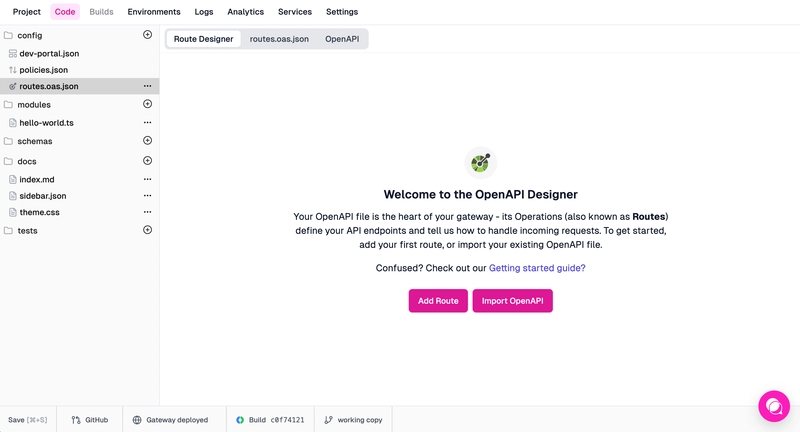
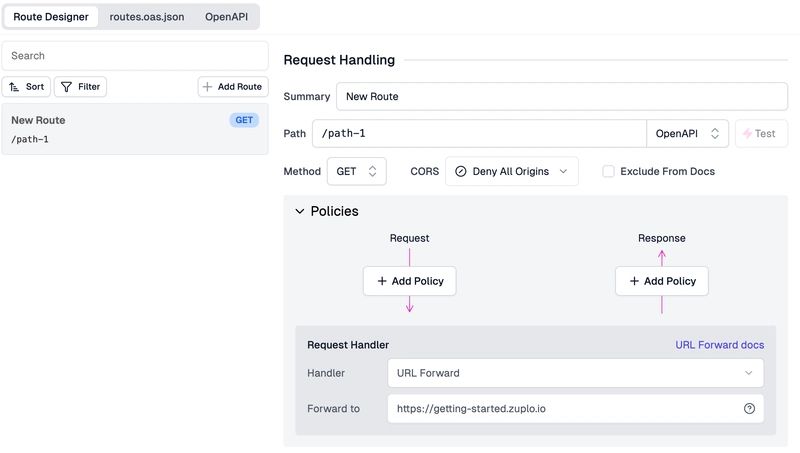
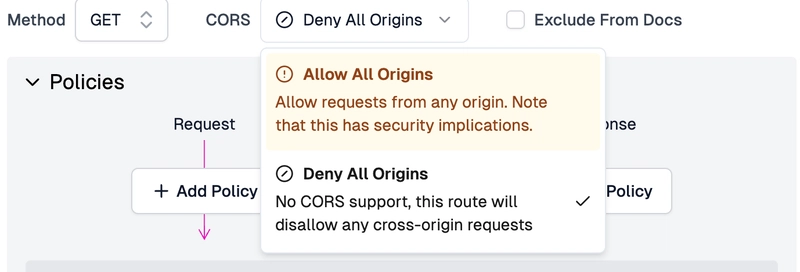


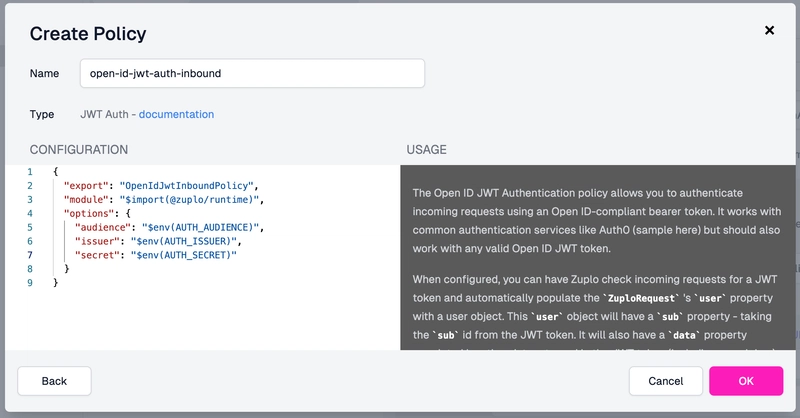

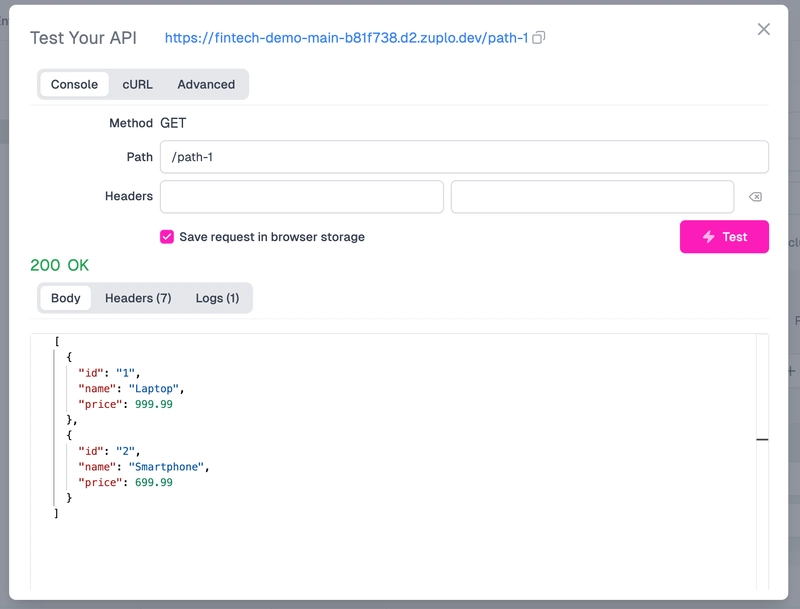


Top comments (0)